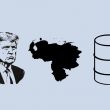Me encuentro en la internet con una investigación en proceso titulada Commercial Frameworks for National Oil Companies que realizan Miranda L. Wainberg, Dimitry Volkov y Michelle Michot Foss, investigadores del Center for Energy Economics de la Universidad de Texas en Austin.
La investigación estudia cinco compañías petroleras que pertenecen a sus respectivos gobiernos : PEMEX, PETROBRAS, PetroChina, STATOIL (Noruega) y CNOOC (China). Huelga adelantar que el análisis y el diagnóstico no resultan muy favorables para el pobre PEMEX. Supongo que no faltará quien argumente que se debe a que realizan el estudio investigadores interesados en afianzar la supremacía del imperialismo. El estudio, consultable aquí, extenso y cargado de cuadros sinópticos y comparativos resulta de imposible glosa, por lo que me limito a citar algunas de sus conclusiones parciales :
With respect to adding oil reserves through the drill-bit (extensions plus discoveries plus improved recovery, net of revisions), Pemex has had a dismal record especially when compared with similar companies PetroChina and Petrobras.Excluding revisions, Pemex’s oil reserve additions remain very low at 310 MMB (million barrels) over the period.
Pemex sees three alternatives for increasing oil reserve additions and production (Chicontepec development, mature field development, and deep water development) but all three alternatives require new technical solutions, new technical applications for enhanced recovery, intensive drilling and execution capacity and a high degree of efficiency.
However, Pemex has limited access to new technology and best practices in project management and are calling for “strategic alliances” in deepwater exploration and production.
Pemex’s gas reserve additions are comparable with those of the other four companies. However, the poor oil drilling performance has resulted in failure to replace 75 percent of its production since 2002 leading to a 25 percent decrease in proved reserves. Moody’s considers Pemex’s performance on the RRC and PRC metrics as sub-investment grade (Caa).
The other four companies’ performance on the RRC and PRC metrics is investment grade (Statoil-Baa; PetroChina, Petrobras, CNOOC-A-Aaa).
Mexico is the only country in this group which prohibits non-Pemex entities from participation in the upstream sector.
As a result, Pemex has not had the same access to knowledge transfer from highly competent foreign companies nor the incentives to improve performance that come from competition.
All five companies have seen their capital costs double since 2002 due to high commodity prices and increased exploration and development activity. As a result, reserve replacement costs have increased for every company except Pemex. Pemex’s RRC improved between 2004 ($23.27) and 2005 ($19.57) as net oil revisions went from -109 MMB to +197 MMB. However, the absolute level of Pemex’s RRC is by far the highest of the five, attributable to poor oil drilling performance. Similarly, Pemex’s cash margin/BOE is much lower than those of the other four companies. This indicates that Pemex’s level of embedded production and reserve replacement costs is high which impairs its ability to generate cash for future investment. As a result, upstream sustainability is threatened.
Statoil’s production is flat over 2002-2005; Mexico’s increased 6 percent showing that Pemex can produce what it currently has; PetroChina’s production and proved reserves increased 11 percent and 19 percent, respectively, despite the maturity of its major three producing areas and the production and proved reserve increases of CNOOC and Petrobras reflect the relative immaturity of their reserve bases.
All companies except Pemex can fund their capital expenditures comfortably from operating cash flow. Pemex needed outside financing to fund about 65 percent of its upstream capital expenditures in 2004 and 2005. As will be seen in the following section, this results in an extremely high debt level for Pemex that would be rated sub-investment grade (Caa) if not for “the extraordinary implicit support of the Mexican government” (Moody’s, 2005).
Ahora bien… ¿habrá quien me explique si todo es cierto y, en caso de serlo, por qué?

Es un escritor, editorialista y académico, especialista en poesía mexicana moderna.















